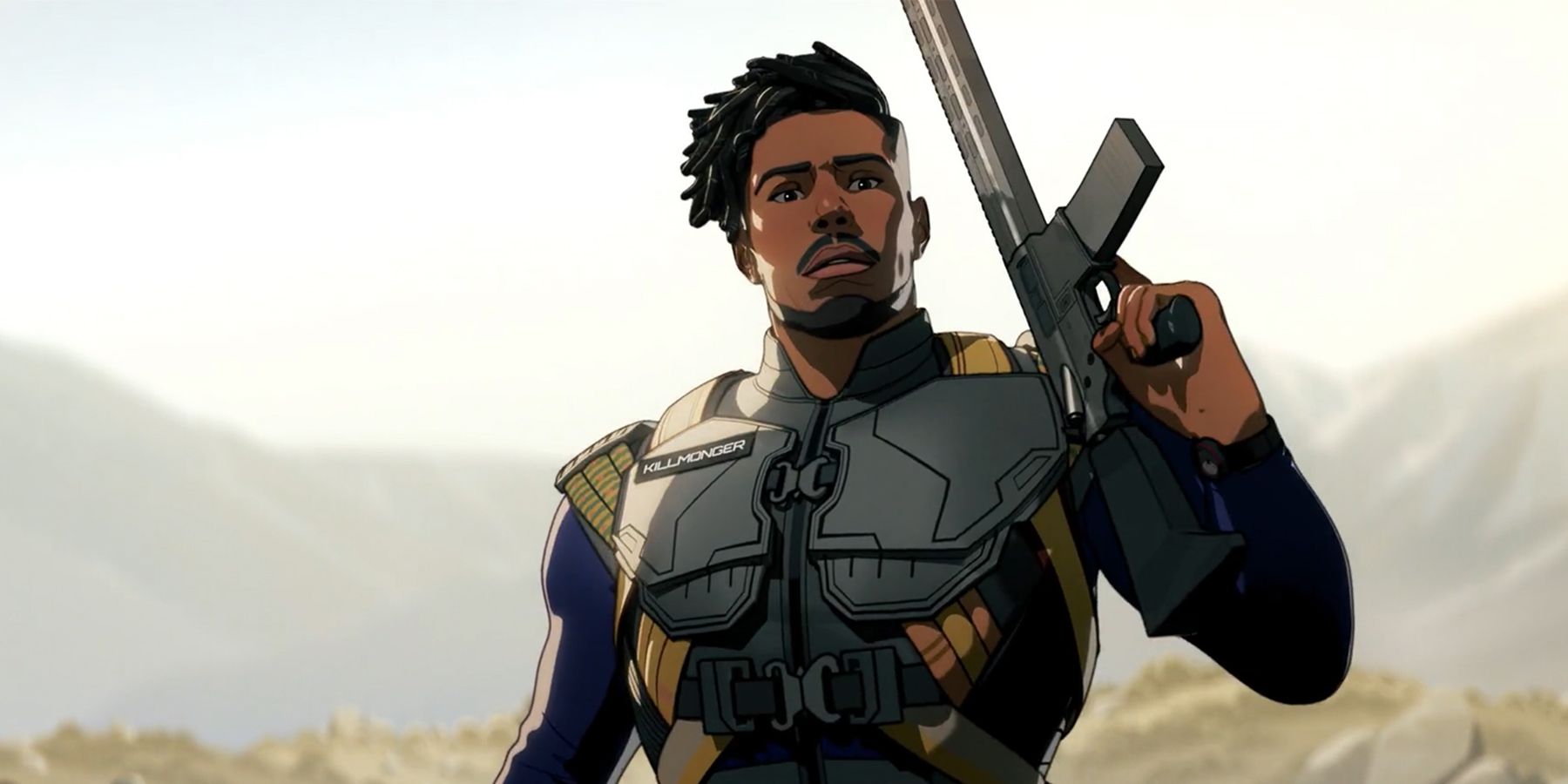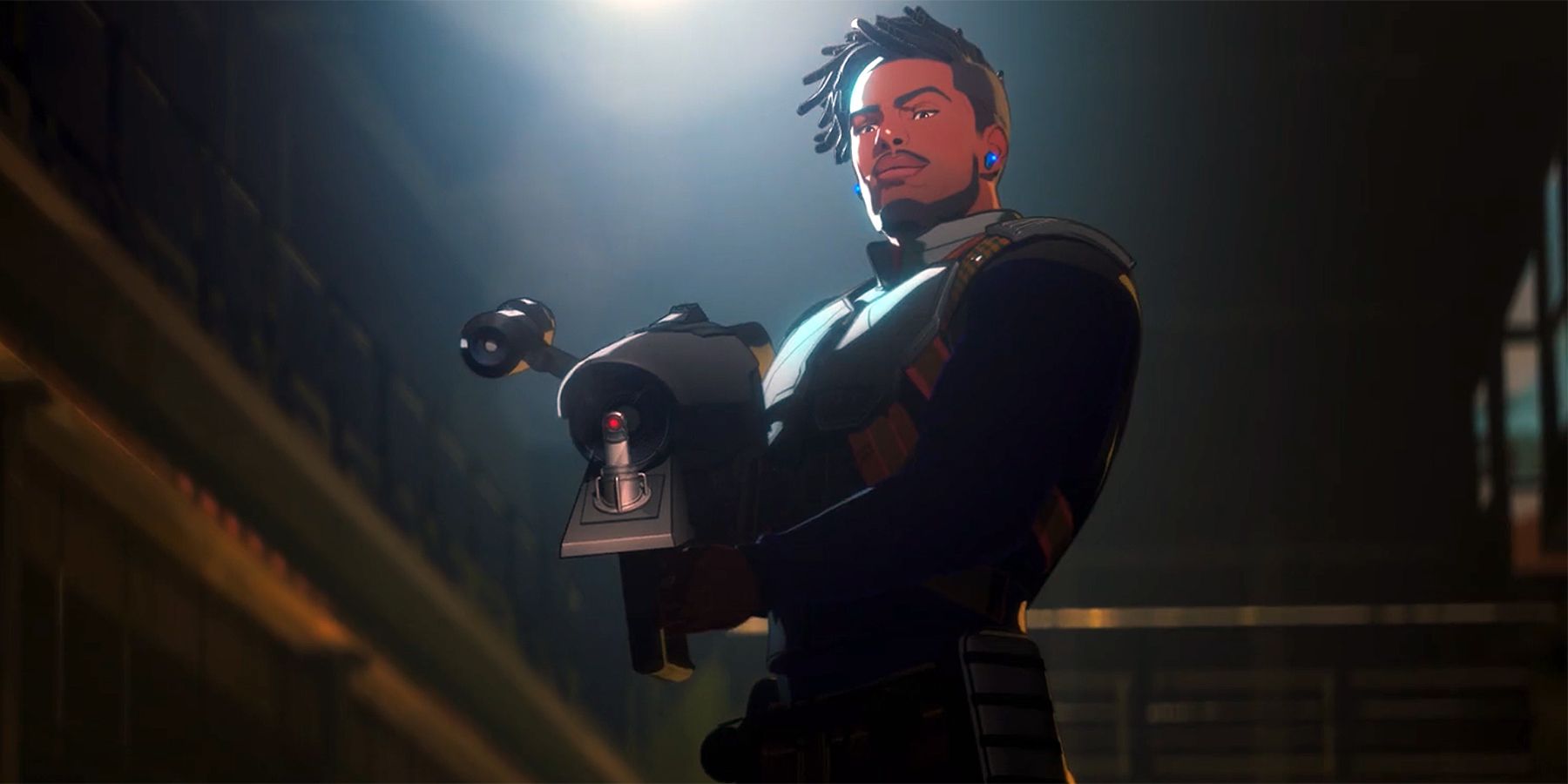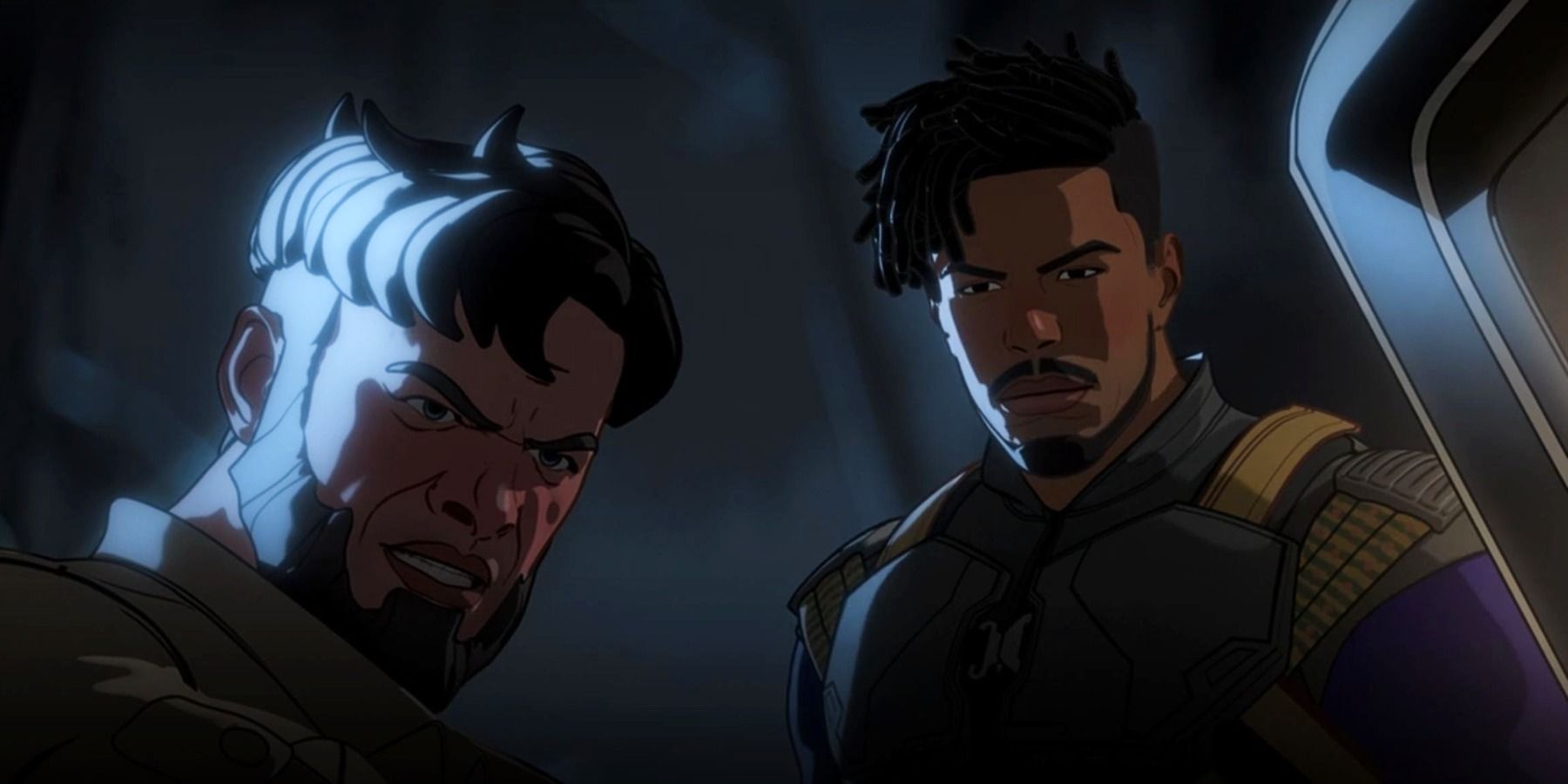This article contains spoilers for What If…? Episode 6.
Yet again, the latest episode of What If…? has managed to tell a story that stands out from the rest in the best possible way. Past episodes have played with genre, running the gamut from mystery to drama to horror — but this episode breaks the mold by focusing not on the heroes, but on a villain.
Episode 6 of What If…?, titled “What If… Killmonger Rescued Tony Stark?”, follows the domino effect of events that ensue after Erik “Killmonger” Stevens (once again portrayed by Michael B. Jordan), the main antagonist of Black Panther, intervenes in the plot of the original Iron Man. In this timeline, Killmonger — still in his days as a Navy SEAL — saves Tony Stark from the Ten Rings before he can be captured, changing the course of history and preventing Stark from becoming Iron Man. And as the episode shows, that’s only the beginning of the changes caused by Killmonger’s influence.
After returning to the US with Tony, Killmonger promptly exposes the crimes of Obadiah Stane, sending him to prison before he can become Iron Monger. Killmonger then replaces Stane as Tony’s right-hand man, collaborating with him on the Liberator project — a series of combat drones not unlike those used by Justin Hammer in Iron Man 2. But while Killmonger seems to be a loyal ally to Tony at first, it soon becomes clear that he has his own agenda. He murders James Rhodes, T’Challa, and even Stark himself in quick succession, pushing America and Wakanda to the brink of war. And by the end of the episode, he’s even manipulated his way into becoming the new Black Panther.
In short, Episode 6 explores what happens when the villain wins. And in the process, it showcases the qualities that made Killmonger one of the Marvel Cinematic Universe’s most popular villains to begin with. Not only does Michael B. Jordan bring his usual charisma to the role, but the story itself also highlights Killmonger’s defining attributes. His manipulative cunning and keen strategic mind are on full display as he schemes his way into becoming a trusted ally of both Tony Stark and King T’Chaka, with neither of them suspecting his true intentions until it’s too late. Killmonger executes his master plan with ruthless efficiency, backstabbing allies and enemies alike in the pursuit of greater power.
But of course, one of the biggest things that endeared Killmonger to audiences in the first place wasn’t just his wits or his charisma, but his sympathetic characterization. Though Episode 6 shows Killmonger at his most callous, it also reinforces that the evil he commits is all driven by a desire to take vengeance on both the US and Wakanda for all the wrong they’ve done throughout history. Before killing Rhodey, Killmonger calls him out for being complicit in upholding a corrupt establishment — while Rhodey is content to seek to change things from within the system, Killmonger would rather destroy the system altogether. Later, during his showdown with Tony, Killmonger tells Stark that “The difference between you and me is that you can’t see the difference between you and me” — an obvious nod to the fact that Tony was born into wealth and privilege, while Killmonger grew up a victim of prejudice and had to earn his way to power. Despite his good intentions, this timeline’s Tony never truly came to recognize his own role in the corruption he sought to end.
Indeed, the true antagonist of the episode isn’t Killmonger himself, but rather the American military-industrial complex, as personified by Marvel’s resident bullheaded military man General Thaddeus “Thunderbolt” Ross. Ross needs no convincing to invade Wakanda after Killmonger framed them for Tony’s murder, taking control of the Liberator drones and sending them into battle against the Dora Milaje. But while Ross is certainly the most unsympathetic character of the episode, the show makes it clear that Killmonger is no saint himself. As noble as his goals may be, his methods are murderous and manipulative. As T’Challa himself tells Killmonger, “You believe the cure for human suffering is more suffering”. Instead of attempting to change the world through peaceful means, Killmonger seeks to bring ruin to both Wakanda and America by kicking off a war between the two nations. In the end, his true goal isn’t salvation, but annihilation.
But despite his crimes, Killmonger nevertheless remains one of the most compelling, nuanced characters in the MCU. He’s both villainous and sympathetic, ruthlessly cruel yet all too human. Yes, he’s evil, but he’s also much more complicated than that. The episode even lends Killmonger some added relatability by revealing that he’s an anime fan — no doubt a nod to Michael B. Jordan’s own love of shows like Gundam and Dragon Ball. Though he may be long-dead in the main MCU timeline, Killmonger’s appearance in this episode serves as a welcome reminder of why he’s such a beloved villain in the first place. The fact that the series can allow fan-favorite characters to return to the spotlight is just another reason why What If…? is such a special addition to the Marvel Cinematic Universe.



